vacuum leak
#1
I have been tracing some vacuum leaks in my '84 Euro. I have made the pressurization tool and attached to my MAF. BY using soap and water, I am getting a vacuum leak coming from the idle adjustement screw at the front of the TB. I am assuming this should not be leaking air to the outside. Is there an o-ring to seal this or something else? I just wanted to know what I was getting into before removing the screw and checking it out for myself. Has anyone checked this before?
#2
Hello Mike,
There were a couple of places I found vacuum leaks on my US '84. Here's some pics.
When I pressurized the system and sprayed soap water on leak sources, bubles would form. Here's a leak at the idle adjustment screw
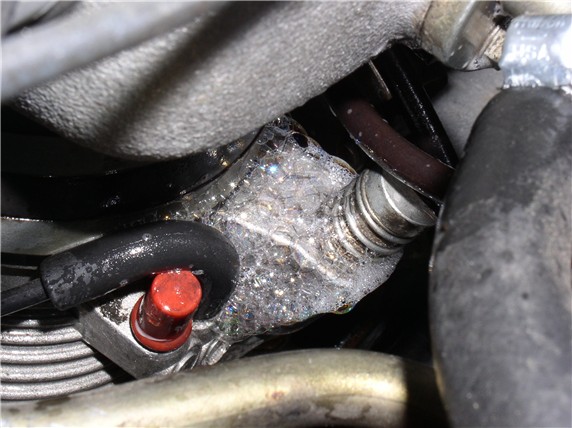
The screw simply "unscrews". I counted the number of turns it took to remove the screw so I could set it back in approximately the same setting. The screw is under the force of a spring - also pictured.
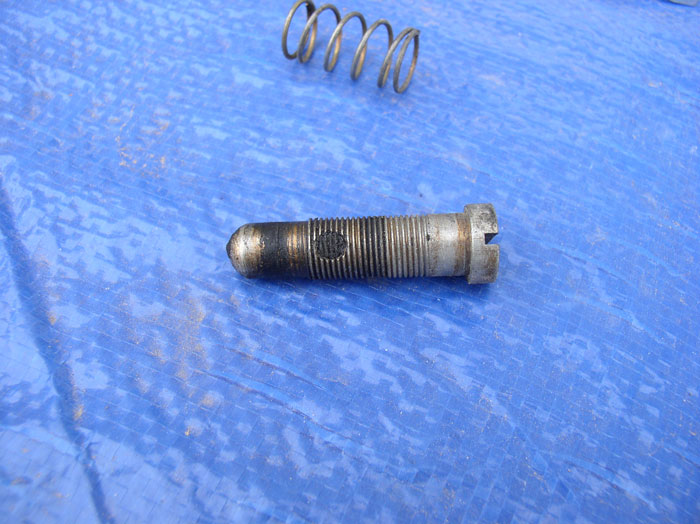
After the screw is out, you can clean it. There's a small silicone plug that goes through the screw at the threads. You can remove that too and clean.
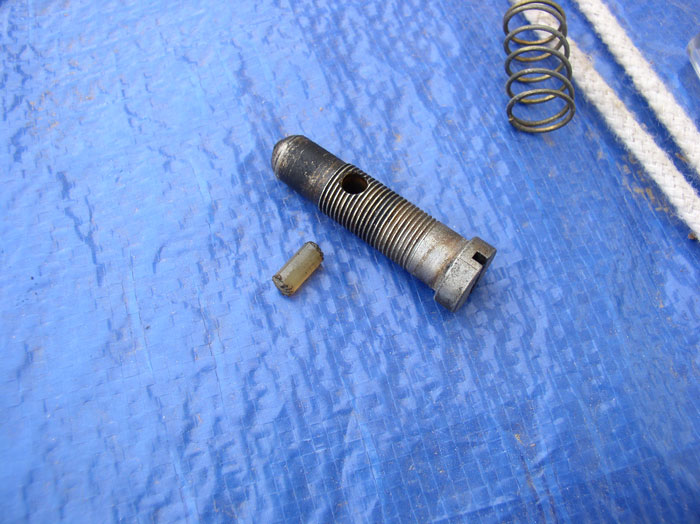
I simply used teflon tape to cure this leak. Wrapped the tape just above the silicone plug as shown. Then set the screw and spring back in the throttle and tighten down the same number of turns you counted when it was removed.
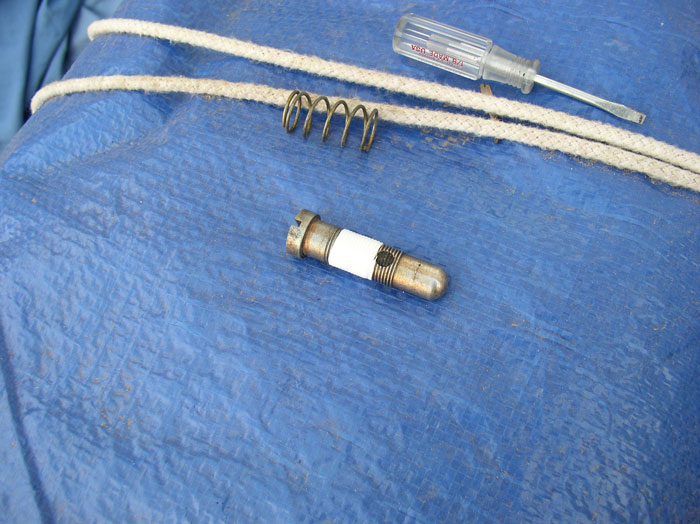
I had another very small leak at the vacuum port at the plenum that leads to the fuel tank vent solenoid. A small amount of bubble appeared here.
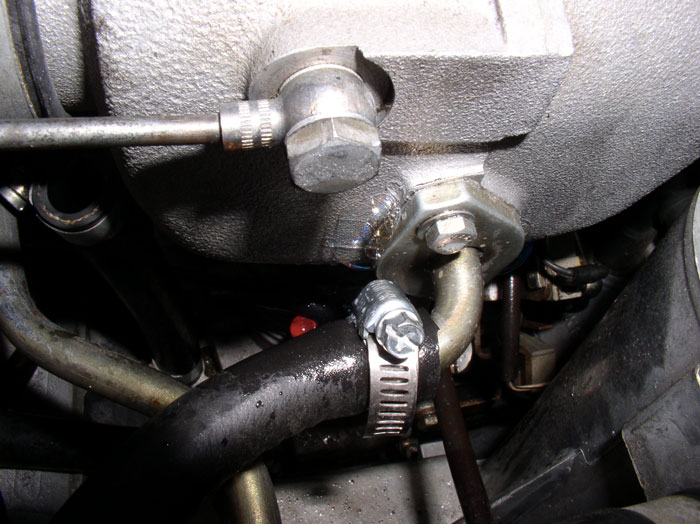
After removing the port. I found an o-ring that had hardened and was no longer providing an air-tight connection.

Fortunately, I had an o-ring that fit in my o-ring assortment. I installed the o-ring and re-mounted the port to the plenum.
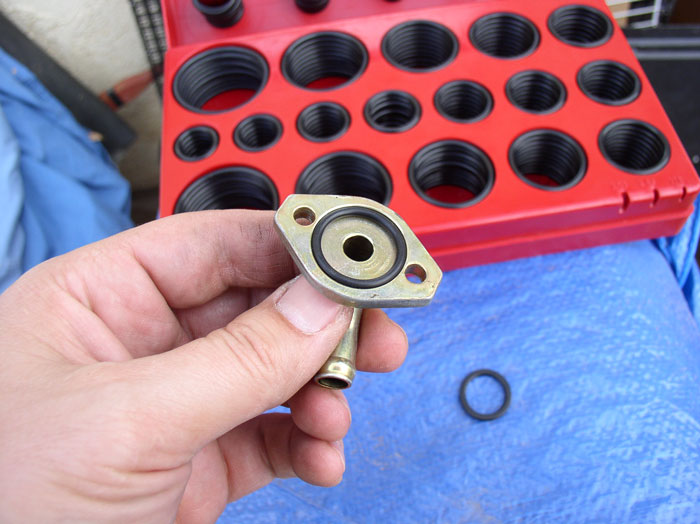
Both of these repairs cured the leaks at these locations. I was very happy with the results. However, I had some more leaks elsewher that needed attention too. Hope this help....
There were a couple of places I found vacuum leaks on my US '84. Here's some pics.
When I pressurized the system and sprayed soap water on leak sources, bubles would form. Here's a leak at the idle adjustment screw

The screw simply "unscrews". I counted the number of turns it took to remove the screw so I could set it back in approximately the same setting. The screw is under the force of a spring - also pictured.

After the screw is out, you can clean it. There's a small silicone plug that goes through the screw at the threads. You can remove that too and clean.

I simply used teflon tape to cure this leak. Wrapped the tape just above the silicone plug as shown. Then set the screw and spring back in the throttle and tighten down the same number of turns you counted when it was removed.

I had another very small leak at the vacuum port at the plenum that leads to the fuel tank vent solenoid. A small amount of bubble appeared here.

After removing the port. I found an o-ring that had hardened and was no longer providing an air-tight connection.

Fortunately, I had an o-ring that fit in my o-ring assortment. I installed the o-ring and re-mounted the port to the plenum.

Both of these repairs cured the leaks at these locations. I was very happy with the results. However, I had some more leaks elsewher that needed attention too. Hope this help....
#5
Yes, I recall that it did not make a significant improvement in the idle roughness. I also repaired a small leak at the auxillary air valve but it did not make a significant improvement either. I believe I must have a large enough leak that the smaller leaks are insignificant by comparison. It still idles a little rough when cold - better when warm. Since my repairs on the '87, I'm armed with additional information on where to look on the '84 for more leaks. I hope to get back to leak hunting on the '84 next month.
#6
I had a rough idle and occasional stalling with mine a year or 2 ago - barely reached 800rpm cold. In the end I checked the extra (or Aux) air valve, and it wasnt fully open cold - around 50%. I opened it up (drilled out the rivets), put it in the freezer, bent the spring inside until it was at least 80% open, checked that it fully closed hot, closed it up with short M6 bolts and nylocs. Now I get 1000-1200rpm on startup, dropping to normal 750 hot, so its good now.
jp 83 Euro S AT 52k
jp 83 Euro S AT 52k
#7
Hello Mike,
There were a couple of places I found vacuum leaks on my US '84. Here's some pics.
When I pressurized the system and sprayed soap water on leak sources, bubles would form. Here's a leak at the idle adjustment screw
Attachment 331260
The screw simply "unscrews". I counted the number of turns it took to remove the screw so I could set it back in approximately the same setting. The screw is under the force of a spring - also pictured.
Attachment 331261
After the screw is out, you can clean it. There's a small silicone plug that goes through the screw at the threads. You can remove that too and clean.
Attachment 331262
I simply used teflon tape to cure this leak. Wrapped the tape just above the silicone plug as shown. Then set the screw and spring back in the throttle and tighten down the same number of turns you counted when it was removed.
Attachment 331263
I had another very small leak at the vacuum port at the plenum that leads to the fuel tank vent solenoid. A small amount of bubble appeared here.
Attachment 331264
After removing the port. I found an o-ring that had hardened and was no longer providing an air-tight connection.
Attachment 331265
Fortunately, I had an o-ring that fit in my o-ring assortment. I installed the o-ring and re-mounted the port to the plenum.
Attachment 331266
Both of these repairs cured the leaks at these locations. I was very happy with the results. However, I had some more leaks elsewher that needed attention too. Hope this help....
There were a couple of places I found vacuum leaks on my US '84. Here's some pics.
When I pressurized the system and sprayed soap water on leak sources, bubles would form. Here's a leak at the idle adjustment screw
Attachment 331260
The screw simply "unscrews". I counted the number of turns it took to remove the screw so I could set it back in approximately the same setting. The screw is under the force of a spring - also pictured.
Attachment 331261
After the screw is out, you can clean it. There's a small silicone plug that goes through the screw at the threads. You can remove that too and clean.
Attachment 331262
I simply used teflon tape to cure this leak. Wrapped the tape just above the silicone plug as shown. Then set the screw and spring back in the throttle and tighten down the same number of turns you counted when it was removed.
Attachment 331263
I had another very small leak at the vacuum port at the plenum that leads to the fuel tank vent solenoid. A small amount of bubble appeared here.
Attachment 331264
After removing the port. I found an o-ring that had hardened and was no longer providing an air-tight connection.
Attachment 331265
Fortunately, I had an o-ring that fit in my o-ring assortment. I installed the o-ring and re-mounted the port to the plenum.
Attachment 331266
Both of these repairs cured the leaks at these locations. I was very happy with the results. However, I had some more leaks elsewher that needed attention too. Hope this help....
Trending Topics
#8
Found my next leak. Seems to be coming out around my oil fill cap, around the yellow hand ****, not the cap itself. PET is showing an o-ring around the cap, but nothing on the hand ****. Anyone have this issue? What is the fix?
#9
Don't know what MY your car is or age. Besides the inside of cap, I only know of people having leaks at the base of the filler tube. IIRC there is not a gasket, but it was suggested I use a sealer when I replaced the baffle betw block and oil tube. HTH.
#12
small leaks are not a problem. certainly ONLY an issue at idle. If it is idling a little higher than normal, you have a little leak that you might want to track down. rough running especally at different temps, engine temps, etc, is a big leak. the best way to find them is to spray carb cleaner around the intake and see if you get rise in idle speed. (the vacuum pulls in the spray which is combustable and the idle will go up or get rough)
I remember this kind of large leak with my 84 at the throttle body ribber adapter area. It was a big leak that when fixed by tightening and reseating the adapter, things went back to normal.
mk
I remember this kind of large leak with my 84 at the throttle body ribber adapter area. It was a big leak that when fixed by tightening and reseating the adapter, things went back to normal.
mk
The following users liked this post:
Donald Smith (11-03-2021)
#13
WARNING, spraying flammable liquids on a running engine may cause an explosion /fire to erupt, as bad spark plug wires will cause ignition. If you must take this course have a fire extinguisher handy and or a charged hose, and work outside so you dont burn down your house/garage
#14
Hello Mike,
There were a couple of places I found vacuum leaks on my US '84. Here's some pics.
When I pressurized the system and sprayed soap water on leak sources, bubles would form. Here's a leak at the idle adjustment screw
Attachment 331260
The screw simply "unscrews". I counted the number of turns it took to remove the screw so I could set it back in approximately the same setting. The screw is under the force of a spring - also pictured.
Attachment 331261
After the screw is out, you can clean it. There's a small silicone plug that goes through the screw at the threads. You can remove that too and clean.
Attachment 331262
I simply used teflon tape to cure this leak. Wrapped the tape just above the silicone plug as shown. Then set the screw and spring back in the throttle and tighten down the same number of turns you counted when it was removed.
Attachment 331263
I had another very small leak at the vacuum port at the plenum that leads to the fuel tank vent solenoid. A small amount of bubble appeared here.
Attachment 331264
After removing the port. I found an o-ring that had hardened and was no longer providing an air-tight connection.
Attachment 331265
Fortunately, I had an o-ring that fit in my o-ring assortment. I installed the o-ring and re-mounted the port to the plenum.
Attachment 331266
Both of these repairs cured the leaks at these locations. I was very happy with the results. However, I had some more leaks elsewher that needed attention too. Hope this help....
There were a couple of places I found vacuum leaks on my US '84. Here's some pics.
When I pressurized the system and sprayed soap water on leak sources, bubles would form. Here's a leak at the idle adjustment screw
Attachment 331260
The screw simply "unscrews". I counted the number of turns it took to remove the screw so I could set it back in approximately the same setting. The screw is under the force of a spring - also pictured.
Attachment 331261
After the screw is out, you can clean it. There's a small silicone plug that goes through the screw at the threads. You can remove that too and clean.
Attachment 331262
I simply used teflon tape to cure this leak. Wrapped the tape just above the silicone plug as shown. Then set the screw and spring back in the throttle and tighten down the same number of turns you counted when it was removed.
Attachment 331263
I had another very small leak at the vacuum port at the plenum that leads to the fuel tank vent solenoid. A small amount of bubble appeared here.
Attachment 331264
After removing the port. I found an o-ring that had hardened and was no longer providing an air-tight connection.
Attachment 331265
Fortunately, I had an o-ring that fit in my o-ring assortment. I installed the o-ring and re-mounted the port to the plenum.
Attachment 331266
Both of these repairs cured the leaks at these locations. I was very happy with the results. However, I had some more leaks elsewher that needed attention too. Hope this help....
thanks for the info , do you think RTV silicone will do the job instead of the o ring ?
thx
#15


